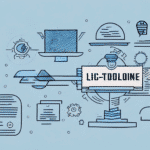Don't Let Fulfillment Issues Sink Your Successful Business
As an entrepreneur, you understand the vital role that order fulfillment plays in the success of any business. Serving as the final touchpoint in the customer journey, fulfillment directly influences customer satisfaction and loyalty. According to a Statista report, over 60% of customers prioritize timely and accurate deliveries when choosing where to shop online. Any mistake in your fulfillment process can lead to negative feedback, poor online reviews, and ultimately a decrease in sales. Therefore, it's essential to establish a smooth and reliable fulfillment process that ensures customer satisfaction and retention.
The Importance of a Smooth Fulfillment Process
The fulfillment process is a pivotal aspect of any business's operations, encompassing everything from receiving orders to delivering products to the customer's doorstep. A smooth fulfillment process ensures that customers receive their orders promptly, efficiently, and cost-effectively. According to a Nielsen report, 75% of consumers are less likely to purchase again if they experience delays in order fulfillment. Consequently, a streamlined fulfillment process plays a significant role in improving customer retention, as satisfied customers are more likely to return for future purchases.
- Cost Reduction: By streamlining the fulfillment process and minimizing errors, businesses can lower expenses related to shipping, packaging, and labor. This operational efficiency can lead to higher profit margins and a more sustainable business model.
- Inventory Management: Effective tracking and management of inventory are crucial. Implementing a well-organized system enables businesses to monitor stock levels accurately, track orders in real-time, and prevent stockouts or overstocking. This ensures that the right products are always available to meet customer demand.
Moreover, leveraging advanced fulfillment strategies can lead to improved decision-making and ensure that your business remains competitive in the rapidly evolving market landscape.
Common Fulfillment Issues and How to Avoid Them
Despite its critical importance, many businesses encounter challenges in order fulfillment that can hinder the customer experience. Common issues include:
- Delayed Shipping Times: Late deliveries can frustrate customers and discourage repeat business.
- Inaccurate Tracking Information: Providing incorrect tracking details can lead to confusion and loss of customer trust.
- Lost, Stolen, or Damaged Shipments: These incidents can result in costly returns and replacements, as well as negative reviews.
To mitigate these problems, businesses should consider implementing a reliable and automated order management system that can efficiently handle multiple orders and monitor the entire fulfillment process. An automated system not only reduces the likelihood of human error but also provides real-time visibility into order status, enhancing overall operational efficiency.
Effective communication with carriers and suppliers is also essential to prevent miscommunications that can lead to fulfillment delays. Establishing clear and efficient communication channels ensures that all parties are aligned and can respond promptly to any issues that arise.
Inventory management remains a common challenge in order fulfillment. Businesses must maintain an optimal balance—having sufficient stock to fulfill orders promptly without incurring the costs associated with excess inventory. Implementing an inventory management system that tracks stock levels in real-time can help prevent stockouts and overstocking, thereby minimizing lost sales and reducing holding costs.
Additionally, offering multiple shipping options can significantly enhance customer satisfaction. Options may include:
- Expedited Shipping: For customers who require their orders quickly.
- Free or Discounted Shipping: For those willing to wait longer, thereby reducing shipping costs for bulk orders.
By catering to diverse customer needs and preferences, businesses can foster higher levels of customer satisfaction and loyalty.
The Role of Technology in Streamlining Fulfillment
Technology plays a pivotal role in optimizing and streamlining fulfillment operations. Numerous software solutions and tools are available to assist businesses in automating and enhancing their order management systems. These technologies can help manage inventory levels, track orders, organize shipments, and identify potential issues or bottlenecks in the fulfillment process.
Advanced fulfillment centers are increasingly adopting technologies such as robots, drones, and Automated Guided Vehicles (AGVs) to accelerate processing times, reduce errors, and improve overall efficiency. According to a McKinsey report, implementing robotics in order fulfillment can increase efficiency by up to 30% while reducing labor costs.
Moreover, leveraging artificial intelligence (AI) and machine learning can significantly enhance fulfillment processes. These technologies can analyze data from past orders and customer behavior to predict future demand, allowing businesses to optimize inventory levels and anticipate peak periods. AI-powered tools can also automate customer service inquiries, enabling staff to focus on more complex tasks and improving overall operational efficiency.
Building a Reliable Shipping and Delivery Network
Your shipping and delivery network form the backbone of your fulfillment process. Partnering with reliable carriers is crucial to ensure timely deliveries, accurate package tracking, and effective handling of any issues or complaints. A reputable carrier should have an extensive network that covers various regions and is capable of handling international shipping when necessary.
In addition to reliability, your delivery network should prioritize customer convenience by offering diverse delivery options, such as:
- Same-Day Delivery: For customers who require urgent delivery.
- Curbside Pickup: Allowing customers to collect their orders without leaving their vehicles.
- Drop-Off at Designated Locations: Providing flexibility for customers to choose convenient pickup points.
Offering multiple delivery options caters to different customer preferences, enhancing satisfaction and loyalty while reducing issues related to delivery unavailability or missed deliveries.
Another critical aspect of a reliable shipping and delivery network is ensuring that your packaging is sturdy and secure. Proper packaging not only protects products during transit but also minimizes the risk of damage, thereby reducing return rates and customer complaints. Accurate labeling and comprehensive documentation are essential, especially for international shipments, to prevent delays and compliance issues with customs regulations.
How to Manage Inventory and Stock Levels Effectively
Effective inventory management is a crucial factor in ensuring smooth and timely order fulfillment. It involves tracking product stock levels, reordering materials, and handling any backorders or out-of-stock situations efficiently. By using inventory management software, businesses can accurately track inventory levels and reorder materials automatically when needed, reducing the risk of stockouts and delays.
Another important aspect of inventory management is forecasting demand. By analyzing sales data and trends, businesses can predict future demand and adjust their inventory levels accordingly. This helps to prevent overstocking or understocking, which can lead to unnecessary costs or lost sales. Additionally, implementing a First-In, First-Out (FIFO) inventory system can help to reduce waste and spoilage of perishable goods.
Organizations should also consider integrating their inventory management systems with other business operations, such as sales and purchasing, to create a cohesive and responsive supply chain. This integration facilitates better communication across departments, ensuring that inventory levels are always aligned with current business needs.
Handling Returns and Exchanges with Ease
Handling returns and exchanges can be a challenging process for businesses. However, it's essential to have a clear and straightforward policy that outlines the return process, including the time frame, shipping, and handling fees. A well-defined return policy not only simplifies the process but also builds trust with customers.
Additionally, businesses should look for ways to simplify the return process, such as:
- Offering free returns to encourage customer confidence.
- Providing printable labels to streamline the return process.
- Including return instructions in the package for clarity.
These measures make the process more manageable for customers, enhancing their overall experience and satisfaction.
Another way to handle returns and exchanges with ease is to have a dedicated customer service team that can quickly respond to inquiries and resolve issues. Providing multiple channels for customers to reach out, such as email, phone, and chat, can also help streamline the process and ensure that customers feel heard and valued.
The Impact of Fulfillment on Customer Satisfaction and Retention
Excellent customer satisfaction levels are vital to the success of any business. Your fulfillment process plays a crucial role in ensuring customer satisfaction and building long-term customer relationships. According to a Forbes article, businesses with efficient fulfillment processes see up to a 20% increase in customer retention rates.
Customers are more likely to return for future purchases and recommend your business to friends and family if they have a positive experience with your fulfillment process. Businesses must prioritize customer satisfaction by improving their fulfillment process, investing in technology to streamline operations, and enhancing communication with carriers and customers. By delivering on-time, accurate, and cost-effective orders, businesses can significantly improve customer satisfaction and retention in the long run.
One way to improve your fulfillment process is by offering multiple shipping options to your customers. This allows them to choose the shipping method that best fits their needs and budget. Additionally, providing tracking information and updates throughout the shipping process can help build trust and confidence with your customers. By offering a variety of shipping options and keeping your customers informed, you can further enhance their experience with your business and increase the likelihood of repeat purchases.
Ensuring Timely Delivery and Meeting Customer Expectations
Meeting customer expectations concerning delivery times is another essential factor in ensuring customer satisfaction. Customers expect their orders to be delivered within a reasonable time frame, and any delay can negatively impact the customer experience. A Bain & Company study found that timely deliveries are a key driver of customer loyalty.
By implementing an effective order management system, optimizing carrier selection, and utilizing delivery tracking tools, businesses can ensure timely delivery, provide accurate delivery estimates, and offer necessary updates along the way. These measures not only enhance customer satisfaction but also reduce the risk of negative feedback and returns.
Employing predictive analytics can further aid in anticipating delivery times and managing logistics more effectively. By analyzing historical data and current order trends, businesses can better forecast delivery windows and adjust their operations to meet customer demands proactively.
Cost-Effective Strategies for Efficient Order Fulfillment
While it's essential to prioritize customer satisfaction, businesses should also focus on cost-effective strategies to improve their fulfillment process. Cost-saving measures can enable businesses to expand their operations while still providing excellent customer service. Some cost-effective strategies to consider include:
- Switching to More Affordable Carriers: Evaluate and negotiate with carriers to find cost-effective shipping solutions without compromising on quality.
- Re-evaluating the Delivery Network: Optimize your delivery routes and network to reduce transportation costs and improve efficiency.
- Optimizing the Order Fulfillment Process: Streamline operations by automating repetitive tasks and reducing manual interventions.
By implementing these strategies, businesses can reduce costs while simultaneously enhancing the quality of their fulfillment processes, leading to sustained growth and long-term profitability.
The Benefits of Outsourcing Your Fulfillment Operations
Outsourcing your fulfillment operations is another effective way to enhance your fulfillment process while reducing costs. By partnering with an experienced fulfillment center, businesses can leverage the center's expertise, optimize their shipping operations, and minimize errors and delays. According to a Supply Chain Digital article, outsourcing fulfillment can lead to a 25% reduction in operational costs.
Additionally, outsourcing fulfillment operations can improve flexibility, making it easier to scale and meet demand fluctuations. This approach allows businesses to quickly adjust to seasonal spikes or unexpected increases in order volume without the need for significant internal investments in infrastructure or labor.
Outsourcing also frees up valuable resources, enabling businesses to focus on core activities such as product development, marketing, and customer service. By entrusting fulfillment to specialists, companies can ensure that their orders are handled efficiently and professionally, further enhancing customer satisfaction levels.
The Role of Analytics in Optimizing Your Fulfillment Process
Analytics plays a crucial role in improving the efficiency of your fulfillment process. By collecting and analyzing data on various aspects of fulfillment, including inventory levels, shipping times, and customer feedback, businesses can identify areas for improvement and optimize their processes accordingly. According to a Harvard Business Review article, businesses that utilize fulfillment analytics can improve their operational efficiency by up to 15%.
Analytics enables businesses to:
- Identify Trends: Spot patterns in customer orders and preferences to better forecast demand.
- Forecast Demand: Use historical data to predict future order volumes and adjust inventory levels accordingly.
- Develop Strategies: Create data-driven strategies to meet changing customer needs and enhance the fulfillment process.
By continuously monitoring and analyzing fulfillment data, businesses can make informed decisions, reduce costs, and increase customer satisfaction levels. Investing in robust analytics tools is essential for maintaining a competitive edge in the ever-evolving market.
Overcoming Challenges in International Shipping and Customs Regulations
International shipping presents unique challenges, including navigating customs regulations, taxes, and international duties. Businesses looking to expand their operations into new regions must carefully consider these factors and plan accordingly. A U.S. Export Administration website highlights that understanding international trade laws is critical to avoiding costly delays and fines.
To overcome these challenges, businesses should:
- Partner with Reliable and Experienced Carriers: Ensure that carriers have expertise in international shipping and can handle complex logistics.
- Understand Trade Regulations: Stay informed about the import and export laws of the countries you are shipping to and from.
- Seek Professional Advice: Consult with customs brokers or trade compliance experts to navigate regulatory requirements effectively.
- Use Technology to Streamline Processes: Implement software solutions that can manage international shipping documentation and compliance automatically.
By addressing these factors proactively, businesses can successfully expand their global reach, tap into new markets, and unlock additional revenue streams.
The Future of Fulfillment: Trends to Watch Out For
The fulfillment industry is continuously evolving, with several trends set to shape its future. Staying ahead of these trends can provide businesses with a competitive advantage and enhance their customer service offerings. Key trends to watch include:
- Automation: The increasing use of automation technologies, such as robotics and AI, to enhance fulfillment speed and accuracy.
- Blockchain Technology: Utilizing blockchain for transparent and secure tracking of shipments and transactions.
- Augmented Reality (AR) and Virtual Reality (VR): Implementing AR and VR to improve warehouse management and enhance the customer unboxing experience.
Businesses that anticipate these developments and invest in the necessary technologies can gain a significant competitive edge. Additionally, offering personalized and seamless delivery experiences will be crucial in meeting the growing expectations of customers worldwide. By embracing these trends, businesses can optimize their fulfillment processes and stay ahead of the competition.
Conclusion
Order fulfillment is a crucial aspect of any business, and it can make or break a customer's experience. By investing in technology, optimizing processes, and focusing on customer satisfaction, businesses can build reliable and streamlined fulfillment operations that lead to long-term success and profitability. Staying informed about industry trends and continuously improving your fulfillment strategies will ensure that your business remains competitive and capable of meeting the evolving needs of your customers.




















